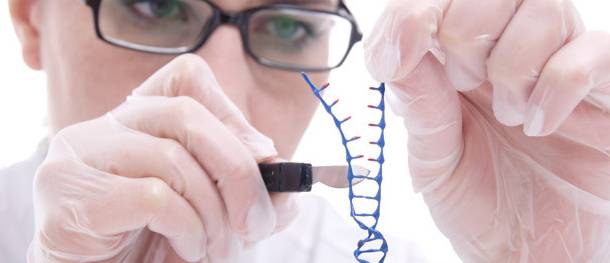
CRISPR基因编辑的蔬菜悄然问世!
在2014年8月13日,发表在Cell子刊《Trends in Biotechnology》的一项研究称,基因组精确编辑技术的最新研究进展,增加了这样一种可能性:不需要引入外源基因,就可以对水果和其他作物进行遗传改良。以快捷、简易且经济而著称的CRISPR技术,正在农业界引爆一场变革——多家公司已开始争相种植基因编辑作物,以期这些农作物最终能够进入市场。
最近,通过“基因剪刀”CRISPR-Cas9修饰的转基因蔬菜已经收获并被烹饪,这可能是有史以来第一顿用基因编辑蔬菜烹制的大餐。瑞典于默奥大学(Umeå University)的植物细胞与分子生物学教授Stefan Jansson,向电台展示了用“CRISPRy”蔬菜烹制的意大利面。虽然这顿饭只够两个人吃,但它仍然向着“未来科学可以更好地为世界各地的农民和消费者提供健康、美丽和耐寒的植物”,迈出了重要的第一步。
A Swedish scientist included cabbage engineered with CRISPR-Cas9 in this pasta dish.
Stefan Jansson/Umeå University
CRISPR-Cas9是一个复杂的名字,但是这项技术能够容易地改变一个生物体的基因。这一决定性的发现由于默奥大学的研究人员发表在2012年,科学家预测,这把“遗传工程的瑞士军刀”可能会改变世界。有了CRISPR-Cas9技术,研究人员就可以将生物体基因组中存在的数十亿个“字母”进行替换(例如,由DNA组成的整个基因库),或去除短的片段,就像你在文字处理器上编辑文字一样。这一技术被称为“基因编辑”或“基因组编辑”。
CRISPR的第一个临床应用正在进行中;也许我们可以很快使用这种技术,来治愈遗传性疾病。然而,在农业领域的情况则有所不同。在农业领域,问题不在于研究人员是否可以培育出某些作物,从而导致更加可持续发展的土地管理,而是,这些作物是否将被允许用于农业种植。利用CRISPR-Cas9进行基因组编辑的作物,是否应该受到转基因立法的调控呢?如果受转基因立法调控,那么它们在世界各地的种植就是非法的。如果不受转基因立法调控,它们就会像其他植物一样,农民可以根据自己的判断进行种植。
欧盟(EU)一直回避回答这个问题,但在2015年十一月,瑞典农业委员会解释了相关法律,如果只有一部分DNA已被删除,并没有“外源DNA”被插入,那么它就不被视为一种转基因生物(GMO)。这也意味着,即便没有事先许可,这些作物也可以种植。在2016年春季,美国当局表示他们同意这一说法。正在讨论的生物是一种蘑菇,其失去了一部分DNA,这部分DNA能使它变成棕色。这开辟了“未来利用该技术来培育植物”的新局面。
这个夏天,使用CRISPR-Cas9进行基因编辑的植物——以一种不会将植物分类为GMO的方式,已经获准在实验室外面栽培。这在欧洲绝对是第一次,即使在世界其他地方有种植,也是保密的。这一次,瑞典广播电台园艺节目“Odla med P1”参加了一种圆白菜的作物收割,从而带来了可能是有史以来第一顿CRISPR-Cas9基因组编辑蔬菜烹制的大餐。
植物科学家Stefan Jansson说:“正在讨论的CRISPR蔬菜,生长在于瑞典北部默奥大学外面花园的一个托盘里,既不是特别的与众不同,也不比其他什么蔬菜更漂亮。”但它们代表了农业的一个新阶段,在这个阶段,科学进步将在新的植物物种中实现,到一个小或大的程度时,将提供给世界各地的农民。
本文信息来自《微信平台整理》,原文来自《生物通》
原文:
Did a Swedish researcher eat the first CRISPR meal ever served?
In what Swedish plant scientist Stefan Jansson declares “maybe” a historic event, he cultivated, grew, and ate a plant that had its genome edited with CRISPR-Cas9. Umeå University, where Jansson studies how trees know it’s autumn and how proteins allow plants to harvest light, released a 5 Septemberpress release about his meal, a pasta dish that included 300 grams of cabbage he grew from seeds that had been genetically modified with CRISPR-Cas9. The revolutionary technology vastly simplifies the editing of genes, and has triggered many debates about whether its plant products should be considered a genetically modified organism (GMO) and subject to regulation.
As noted by Science Daily and other media outlets, Jansson enjoyed the lunch with Gustaf Klarin, host of a Radio Sweden gardening show, which broadcast it earlier this week (in Swedish). “To our delight—and to some extent to my surprise—the meal turned out really nice,” Jannson wrote in a blog entry on 16 August, the actual day that history might have been made. “Both of us ate with great relish. Gustaf even thought the cabbage was the best tasting vegetable on the plate. And I agreed.”
Jansson’s lab did not create the seed, but he told ScienceInsider he received it from a colleague “in another country” who wants to remain unidentified. As Jansson notes, the European Union has yet to determine whether CRISPR-Cas9 modification that eliminates a gene should be classified as a GMO and thus illegal to grow. But he received approval from the Swedish Board of Agriculture to grow a similar CRISPR-Cas9 seed that his lab had engineered, which the authorities determined was not a GMO as long as it didn’t contain foreign DNA. Jansson told Science that because the plant they ate was by definition not a GMO, “we do of course not need to ask for a permit or even inform them.”
Jansson writes on his blog that he attempted to find out whether eating a CRISPR-edited plant was “a world première,” and no one he knew could think of a precedent.
In April, the U.S. Department of Agriculture told Yinong Yang of Pennsylvania State University, University Park, that his CRISPR-tweaked mushroom was not subject to its regulations. Yang told Science he has eaten mushrooms from his lab, but they may have been the unmodified controls in his CRISPR experiment and, anyway, mushrooms are fungi, not plants.
“In some countries, I wouldn’t be surprised if people kept it [eating CRISPR plants] a secret,” writes Jansson on his blog. “One thing is clear: it’s the first time ever this is done publicly (and legally).”

















